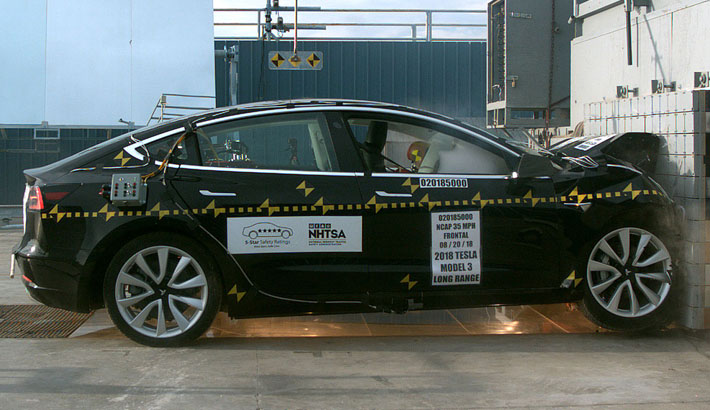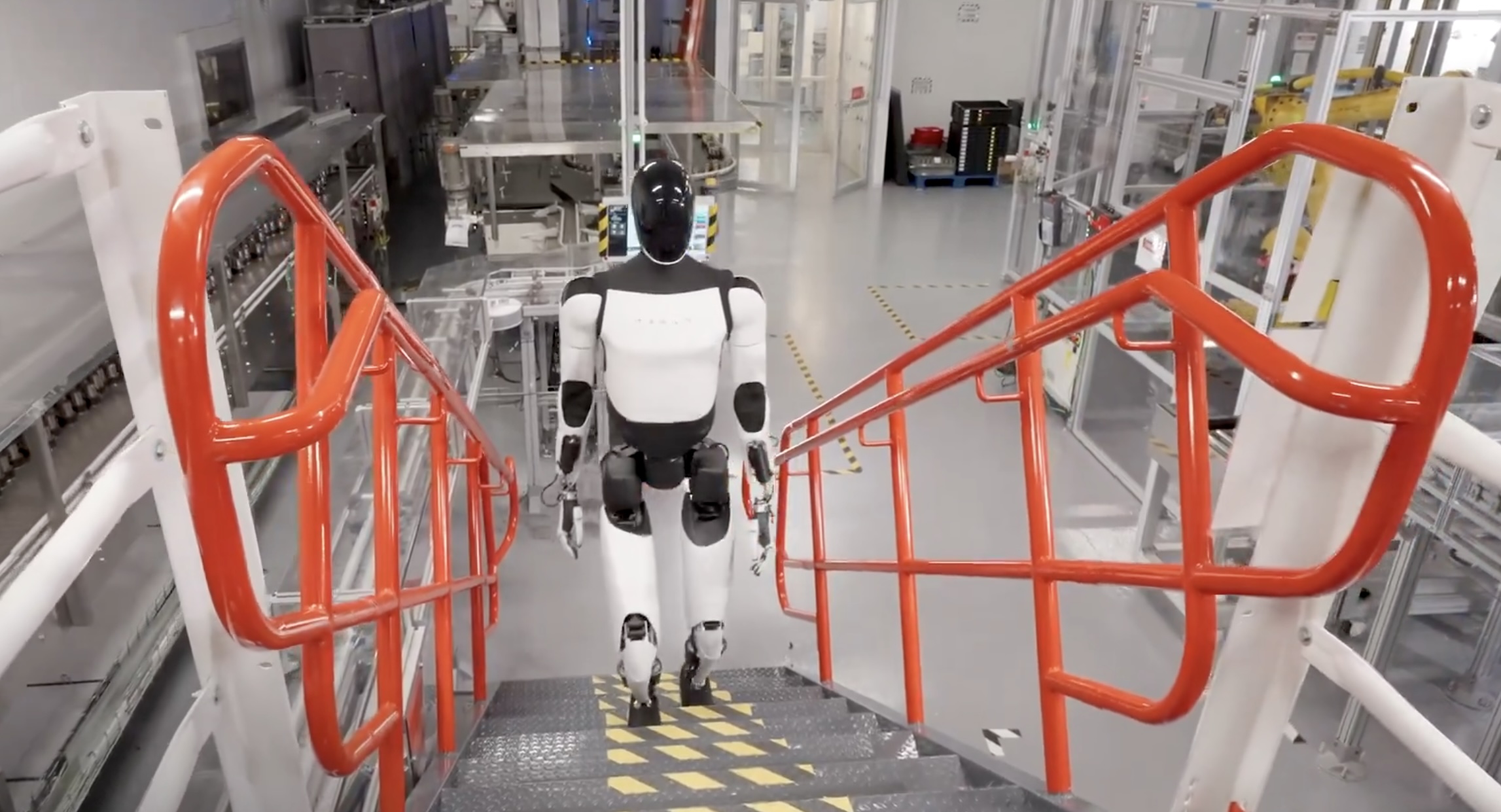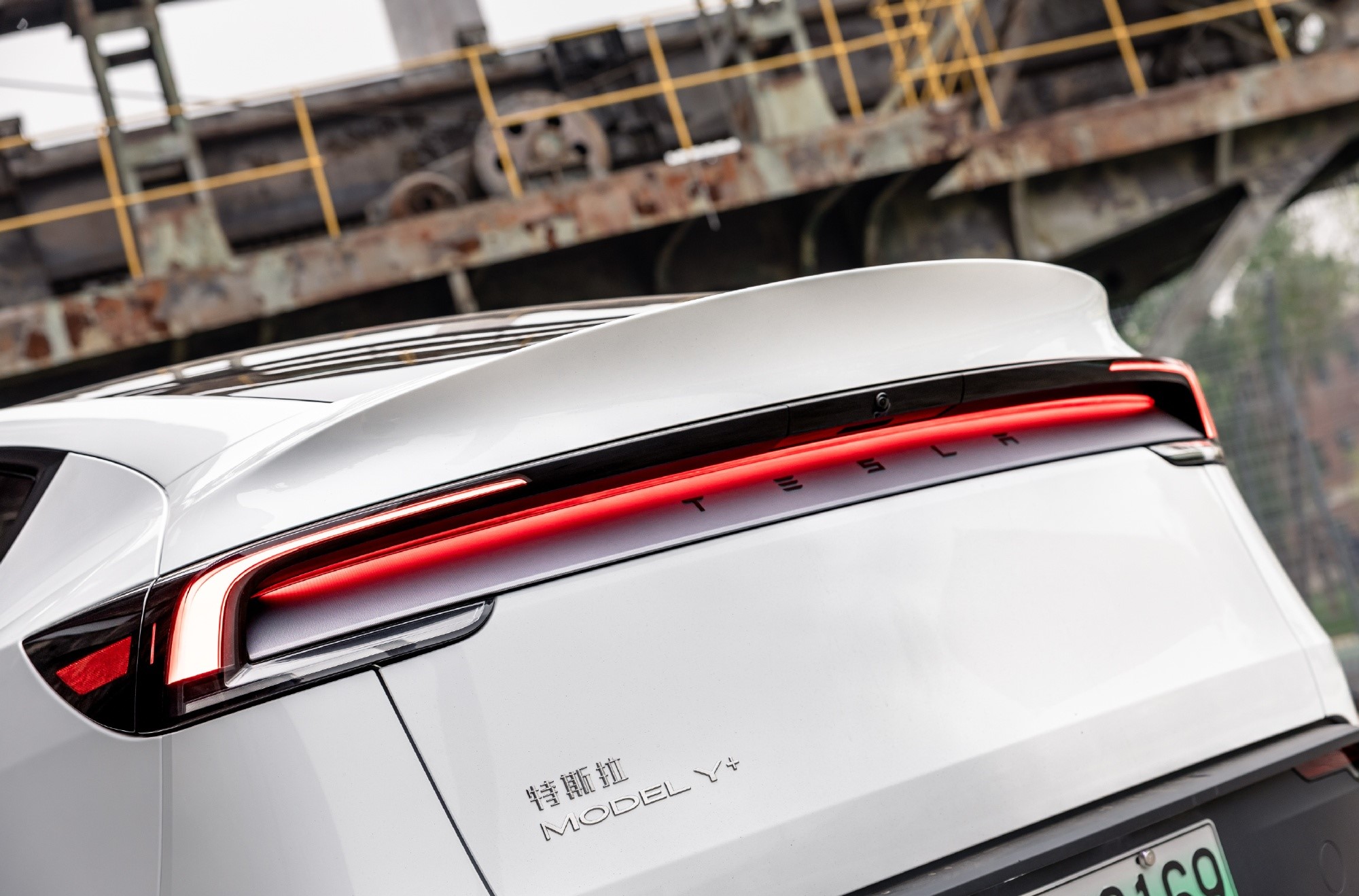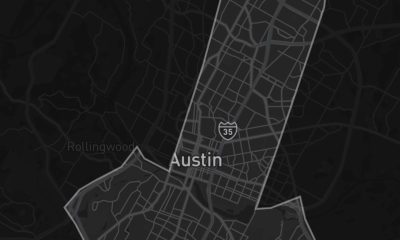

Investor's Corner
Tesla’s Model 3 safety claims and the NHTSA’s scrutiny: A look at an old (revived) story
Multiple reports have recently emerged about the US National Highway Traffic Administration scrutinizing Tesla and the company’s claims that the Model 3 has the lowest probability of injury among vehicles tested by the agency. It should be noted that the NHTSA’s scrutiny, which involved a cease-and-desist letter to Tesla and a prompt response from the automaker, transpired last October, following the agency’s release of the Model 3’s 5-Star Safety Rating.
The NHTSA’s reaction to Tesla recently came to fore due to documents shared by staunch TSLA critic and transparency group Plainsite, which was able to access both the NHTSA’s cease-and-desist letter to Tesla as well as the electric car maker’s response to the agency thanks to a Freedom of Information Act request. What’s quite peculiar about the new string of reports, including those from Bloomberg and Reuters, is that they highlight the NHTSA’s allegations about the company’s alleged misleading claims about the Model 3, but not Tesla’s response arguing that it used the agency’s own data to arrive at its conclusions.
To get an accurate picture of this story, one must look at the full cease-and-desist letter sent by the NHTSA to Tesla, as well as the entire contents of the electric car maker’s response. A copy of each letter will be embedded in this article, to provide a full account of the two parties’ correspondence.
Following Tesla’s release of its blog post stating that the Model 3 has the lowest probability of injury among the vehicles tested by the NHTSA, the agency sent the Silicon Valley-based company a cease-and-desist letter. Addressed to Elon Musk, the letter claimed that Tesla had “issued a number of misleading statements regarding the recent Government 5-Star Ratings of the Tesla Model 3.” NHTSA Chief Counsel Jonathan Morrison, who sent the letter, further argued that statements such as “lowest probability of injury in all cars” are inaccurate and not in the best interests of consumers.
The NHSTA’s cease-and-desist letter to Tesla could be accessed below.
Tesla Model 3 Safety Claims… by Simon Alvarez on Scribd
Tesla disagreed with the NHTSA’s allegations in its response to the cease-and-desist letter. The electric car maker argued that its statements about the Model 3’s safety were neither untrue nor misleading, especially since the company used the NHTSA’s own data (which could be accessed here) when it stated that the electric sedan, as well as its largest siblings, the Model S and Model X, have the lowest probability of injury among vehicles tested by the agency. Tesla also noted that the Model 3’s achievement is “exactly what NHTSA intended with the NCAP — to encourage manufacturers to continuously immprove safety.” With this in mind, Tesla noted that there was no reason to discontinue its blog post highlighting the Model 3’s safety.
Tesla’s full response to the NHTSA could be read below.
Tesla Model 3 Safety Claims… by Simon Alvarez on Scribd
It should be noted that the NHTSA has not doubled down on its allgetations against Tesla’s statements about the Model 3. The electric car maker’s blog post explaining the Model 3’s stellar safety scores is still active today. Contrary to Plainsite’s statements that Tesla was “referred to the FTC for repeatedly lying about the safety of their vehicles,” it appears that the NHTSA opted to back down from its allegations once the electric car maker explained the rationale behind its statements about the Model 3.
The Model 3 has since gained perfect 5-Star Safety Ratings from the Euro-NCAP and the ANCAP, with both safety agencies lauding the vehicle for being one of the safest cars on the road. Following the vehicle’s crash tests, Matthew Avery, head of research at Thatcham Research, which conducts the crash tests with the Euro NCAP, noted that “Tesla has done a great job of playing the structural benefits of an electric vehicle to its advantage. The Tesla Model 3 achieved one of the highest Safety Assist scores we have seen to date.” These sentiments were echoed by ANCAP Chief Executive Officer James Goodwin, who noted that it was “great to see electric vehicles continuing to prioritize safety. It is encouraging to see Tesla give equal attention to the active safety systems and technologies on board as well as the safety fundamentals through the structure and restraints.”
H/T to Vladimir Grinshpun.
Investor's Corner
Tesla could save $2.5B by replacing 10% of staff with Optimus: Morgan Stanley
Jonas assigned each robot a net present value (NPV) of $200,000.

Tesla’s (NASDAQ:TSLA) near-term outlook may be clouded by political controversies and regulatory headwinds, but Morgan Stanley analyst Adam Jonas sees a glimmer of opportunity for the electric vehicle maker.
In a new note, the Morgan Stanley analyst estimated that Tesla could save $2.5 billion by replacing just 10% of its workforce with its Optimus robots, assigning each robot a net present value (NPV) of $200,000.
Morgan Stanley highlights Optimus’ savings potential
Jonas highlighted the potential savings on Tesla’s workforce of 125,665 employees in his note, suggesting that the utilization of Optimus robots could significantly reduce labor costs. The analyst’s note arrived shortly after Tesla reported Q2 2025 deliveries of 384,122 vehicles, which came close to Morgan Stanley’s estimate and slightly under the consensus of 385,086.
“Tesla has 125,665 employees worldwide (year-end 2024). On our calculations, a 10% substitution to humanoid at approximately ($200k NPV/humanoid) could be worth approximately $2.5bn,” Jonas wrote, as noted by Street Insider.
Jonas also issued some caution on Tesla Energy, whose battery storage deployments were flat year over year at 9.6 GWh. Morgan Stanley had expected Tesla Energy to post battery storage deployments of 14 GWh in the second quarter.
Musk’s political ambitions
The backdrop to Jonas’ note included Elon Musk’s involvement in U.S. politics. The Tesla CEO recently floated the idea of launching a new political party, following a poll on X that showed support for the idea. Though a widely circulated FEC filing was labeled false by Musk, the CEO does seem intent on establishing a third political party in the United States.
Jonas cautioned that Musk’s political efforts could divert attention and resources from Tesla’s core operations, adding near-term pressure on TSLA stock. “We believe investors should be prepared for further devotion of resources (financial, time/attention) in the direction of Mr. Musk’s political priorities which may add further near-term pressure to TSLA shares,” Jonas stated.
Investor's Corner
Two Tesla bulls share differing insights on Elon Musk, the Board, and politics
Two noted Tesla bulls have shared differing views on the recent activities of CEO Elon Musk and the company’s leadership.

Two noted Tesla (NASDAQ:TSLA) bulls have shared differing views on the recent activities of CEO Elon Musk and the company’s leadership.
While Wedbush analyst Dan Ives called on Tesla’s board to take concrete steps to ensure Musk remains focused on the EV maker, longtime Tesla supporter Cathie Wood of Ark Invest reaffirmed her confidence in the CEO and the company’s leadership.
Ives warns of distraction risk amid crucial growth phase
In a recent note, Ives stated that Tesla is at a critical point in its history, as the company is transitioning from an EV maker towards an entity that is more focused on autonomous driving and robotics. He then noted that the Board of Directors should “act now” and establish formal boundaries around Musk’s political activities, which could be a headwind on TSLA stock.
Ives laid out a three-point plan that he believes could ensure that the electric vehicle maker is led with proper leadership until the end of the decade. First off, the analyst noted that a new “incentive-driven pay package for Musk as CEO that increases his ownership of Tesla up to ~25% voting power” is necessary. He also stated that the Board should establish clear guidelines for how much time Musk must devote to Tesla operations in order to receive his compensation, and a dedicated oversight committee must be formed to monitor the CEO’s political activities.
Ives, however, highlighted that Tesla should move forward with Musk at its helm. “We urge the Board to act now and move the Tesla story forward with Musk as CEO,” he wrote, reiterating its Outperform rating on Tesla stock and $500 per share price target.
Tesla CEO Elon Musk has responded to Ives’ suggestions with a brief comment on X. “Shut up, Dan,” Musk wrote.
Cathie Wood reiterates trust in Musk and Tesla board
Meanwhile, Ark Investment Management founder Cathie Wood expressed little concern over Musk’s latest controversies. In an interview with Bloomberg Television, Wood said, “We do trust the board and the board’s instincts here and we stay out of politics.” She also noted that Ark has navigated Musk-related headlines since it first invested in Tesla.
Wood also pointed to Musk’s recent move to oversee Tesla’s sales operations in the U.S. and Europe as evidence of his renewed focus in the electric vehicle maker. “When he puts his mind on something, he usually gets the job done,” she said. “So I think he’s much less distracted now than he was, let’s say, in the White House 24/7,” she said.
TSLA stock is down roughly 25% year-to-date but has gained about 19% over the past 12 months, as noted in a StocksTwits report.
Investor's Corner
Cantor Fitzgerald maintains Tesla (TSLA) ‘Overweight’ rating amid Q2 2025 deliveries
Cantor Fitzgerald is holding firm on its bullish stance for the electric vehicle maker.

Cantor Fitzgerald is holding firm on its bullish stance for Tesla (NASDAQ: TSLA), reiterating its “Overweight” rating and $355 price target amidst the company’s release of its Q2 2025 vehicle delivery and production report.
Tesla delivered 384,122 vehicles in Q2 2025, falling below last year’s Q2 figure of 443,956 units. Despite softer demand in some countries in Europe and ongoing controversies surrounding CEO Elon Musk, the firm maintained its view that Tesla is a long-term growth story in the EV sector.
Tesla’s Q2 results
Among the 384,122 vehicles that Tesla delivered in the second quarter, 373,728 were Model 3 and Model Y. The remaining 10,394 units were attributed to the Model S, Model X, and Cybertruck. Production was largely flat year-over-year at 410,244 units.
In the energy division, Tesla deployed 9.6 GWh of energy storage in Q2, which was above last year’s 9.4 GWh. Overall, Tesla continues to hold a strong position with $95.7 billion in trailing twelve-month revenue and a 17.7% gross margin, as noted in a report from Investing.com.
Tesla’s stock is still volatile
Tesla’s market cap fell to $941 billion on Monday amid volatility that was likely caused in no small part by CEO Elon Musk’s political posts on X over the weekend. Musk has announced that he is forming the America Party to serve as a third option for voters in the United States, a decision that has earned the ire of U.S. President Donald Trump.
Despite Musk’s controversial nature, some analysts remain bullish on TSLA stock. Apart from Cantor Fitzgerald, Canaccord Genuity also reiterated its “Buy” rating on Tesla shares, with the firm highlighting the company’s positive Q2 vehicle deliveries, which exceeded its expectations by 24,000 units. Cannacord also noted that Tesla remains strong in several markets despite its year-over-year decline in deliveries.
-

 News3 days ago
News3 days agoTesla debuts hands-free Grok AI with update 2025.26: What you need to know
-

 Elon Musk1 week ago
Elon Musk1 week agoElon Musk confirms Grok 4 launch on July 9 with livestream event
-

 Elon Musk5 days ago
Elon Musk5 days agoxAI launches Grok 4 with new $300/month SuperGrok Heavy subscription
-

 News2 weeks ago
News2 weeks agoTesla Model 3 ranks as the safest new car in Europe for 2025, per Euro NCAP tests
-

 Elon Musk2 weeks ago
Elon Musk2 weeks agoxAI’s Memphis data center receives air permit despite community criticism
-

 News5 days ago
News5 days agoTesla begins Robotaxi certification push in Arizona: report
-

 Elon Musk2 weeks ago
Elon Musk2 weeks agoTesla reveals it is using AI to make factories more sustainable: here’s how
-

 Elon Musk2 weeks ago
Elon Musk2 weeks agoTesla scrambles after Musk sidekick exit, CEO takes over sales













